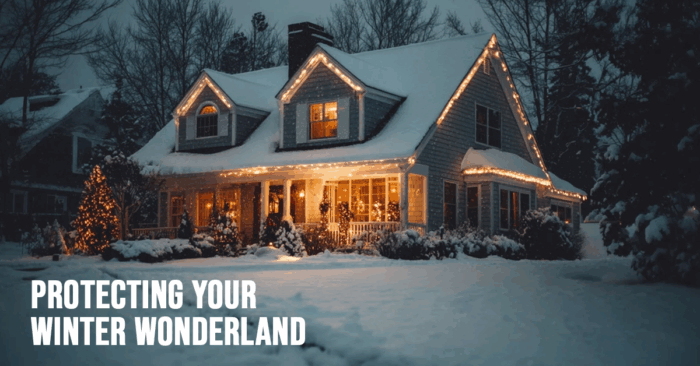Decoding Your Home Insurance Bill: Factors That Matter Most

Decoding Your Home Insurance Bill: Factors That Matter Most
It’s common knowledge that your driving record plays a huge role in determining your auto insurance rates, and your age and health significantly affect your life insurance premiums. But when it comes to your home, what truly impacts the cost of your insurance policy? It’s not always as straightforward as it seems. Understanding these various factors can empower you to make informed decisions and potentially find savings.
Here are some major elements that influence your home insurance costs:
1. Age and Condition of Your Home
One of the most significant factors in home insurance rates is the age and overall condition of the house. Older homes, while charming and full of character, often come with systems that aren’t built to today’s safety or efficiency standards. This can include older wiring, plumbing (like galvanized pipes), and roofs that are past their prime. These older components pose a higher risk for claims such as fires, water leaks, or storm damage. All things considered, a newly constructed home will almost always be less expensive to insure than an older one, primarily because its materials and systems are new and up to current codes, reducing the likelihood of immediate claims.
2. Location, Location, Location
Just as location is key in real estate value, it’s also a critical determinant of your home insurance rates. This extends beyond broad geographical regions (like living in a state prone to hurricanes or wildfires) down to the very specific neighborhood and even the proximity of your home to vital services.
For instance, homes located in areas with a higher crime rate might face higher premiums due to an increased risk of theft or vandalism. Conversely, how close your home is to a fire department and even the nearest fire hydrant can significantly affect rates. Insurers assess the speed at which emergency services can respond; quicker response times generally lead to lower perceived risk and, thus, lower premiums.
3. Replacement Costs
It should be apparent that the more valuable your home is, the more it will cost to replace it in the event of a total loss. This directly translates to higher insurance premiums. Replacement cost isn’t just about the market value of your home; it’s about the cost to rebuild your home from the ground up using current labor and material costs. Factors like custom finishes, unique architectural features, expensive materials (e.g., slate roofs, imported tiles), and the overall square footage all contribute to a higher replacement cost, making it more costly to insure.
4. The Amount of Your Coverage
Your home insurance policy isn’t just one big number; it’s a collection of various limits for different aspects of your property and liability. These limits significantly affect your rates. For example, your policy has specific limits for:
- Dwelling coverage: The cost to rebuild your home’s structure.
- Contents coverage: The value of your personal belongings inside the home.
- Outbuildings/Other Structures: Detached garages, sheds, fences, etc.
- Loss of Use: Costs incurred if you can’t live in your home during repairs.
- Personal Liability: Protection if someone is injured on your property.
You should want these limits to be sufficient to cover potential losses without being excessively high, which could lead to paying for coverage you don’t necessarily need. It’s a balance between comprehensive protection and cost-effectiveness.
5. Your Deductible
The deductible is the portion of a covered claim that you, the insured, pay out of pocket before your policy benefits kick in. This is a direct lever you can pull to influence your premium. Generally, the higher your deductible, the lower your premium will be. This is because you’re agreeing to take on more of the initial financial risk yourself, reducing the insurer’s payout on smaller claims. While choosing a higher deductible can save you money monthly or annually, make sure it’s an amount you can comfortably afford to pay if a claim arises.
6. Safety and Security Features
Many home insurance companies offer discounts for various safety and security features installed in your home. These features reduce the likelihood or severity of claims, making your home less risky to insure. This may include:
- Central station fire alarms: Directly linked to emergency services.
- Burglar alarms: Deter theft and reduce losses.
- Deadbolt locks: Enhance security against forced entry.
- Smoke detectors and carbon monoxide detectors: Early warning for hazards.
- Sprinkler systems: Can significantly reduce fire damage.
- Security cameras: Act as both a deterrent and provide evidence.
Always inform your insurer about any new safety features you install, as these could lead to valuable discounts.
7. Your Credit Rating
In a practice that might surprise some homeowners, insurance companies have found a correlation between consumers with higher credit ratings and a tendency to be more responsible with their insurance. This doesn’t mean your credit score directly dictates your rates, but it’s often used as one of several factors (where legally permitted) in calculating your “insurance score.” A strong credit history can indicate financial stability and responsible behavior, which insurers believe may lead to fewer claims. This, in turn, can lead to better rates for you.
If you haven’t had a home insurance review in years, or even longer than you can remember, it’s time to take action. Connect with one of our independent agents. As independent agents, we are uniquely qualified to review the policies of any company you might currently be with and can even search our network of providers for rates that may be more competitive for your specific situation. Contact us today for a no-obligation, no-cost home insurance review. We look forward to assisting you in understanding your coverage and optimizing your premiums.
Do you have questions about your insurance? Find an insurance agent near you with our Agent Finder
Search All Blogs
Search All Blogs
Read More Blogs
Cozying Up: Embracing the Danish Art of Hygge for a Stress-Free December
Banish the December chaos! A simple guide to adopting Hygge—the Danish concept of cozy contentment—for a truly joyful holiday season.
Tinsel, Traffic, and Transactions: Insuring Your Business Against December’s Holiday Rush Risks
Don’t let the holiday rush expose your business. A guide to essential commercial insurance coverages for increased sales, foot traffic, and cyber threats in December.
The Ultimate December Gift: Why Life Insurance is the Most Important Present You’ll Ever Give
Forget the gadgets; life insurance is the real gift of security. A timely look at protecting your family’s future during the season of giving.
Skids, Slush, and Safety: How Your Auto Insurance Navigates the December Driving Nightmare
Essential auto insurance checks and tips for safe, claim-free driving through December’s challenging winter weather and holiday traffic.
Snowed In, Safely Covered: A December Guide to Home Insurance and Winter Preparedness
Don’t let winter woes ruin your holiday cheer. Essential tips on home insurance coverage for snow, ice, and festive accidents.
The Mindful Feast: Reclaiming Thanksgiving in a World of Distraction
Want a more peaceful Thanksgiving? Learn how to embrace a mindful approach and find true gratitude this year.
The New Entrepreneur’s Playbook: Insuring Your Business for Digital and Global Risks in 2026
Starting a digital-first business? Learn how to protect your enterprise from modern risks in 2026.
The Modern Parent’s Dilemma: Life Insurance for a Generation of Savers and Investors
Today’s parents have new financial goals. Here’s how life insurance can be a flexible tool for a modern family in 2026.
The Gig Economy Driver: Navigating Auto Insurance for Side Hustles in 2026
Driving for a gig app? Your personal auto insurance might not cover you. Learn how to get the right coverage in 2026.
The Modern Homeowner’s Guide to Water Damage: The Hidden Risk of 2026
Water damage is a growing threat to your home. Learn how to prevent it and protect your insurance in 2026.









